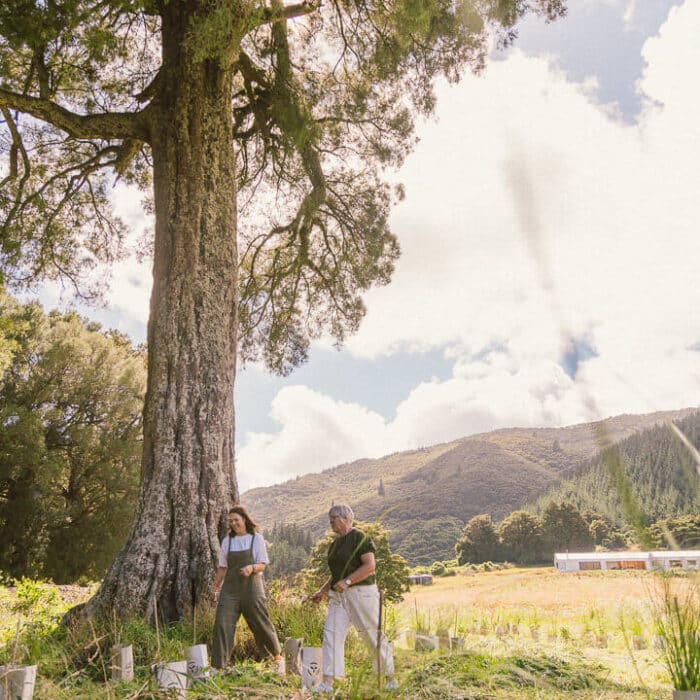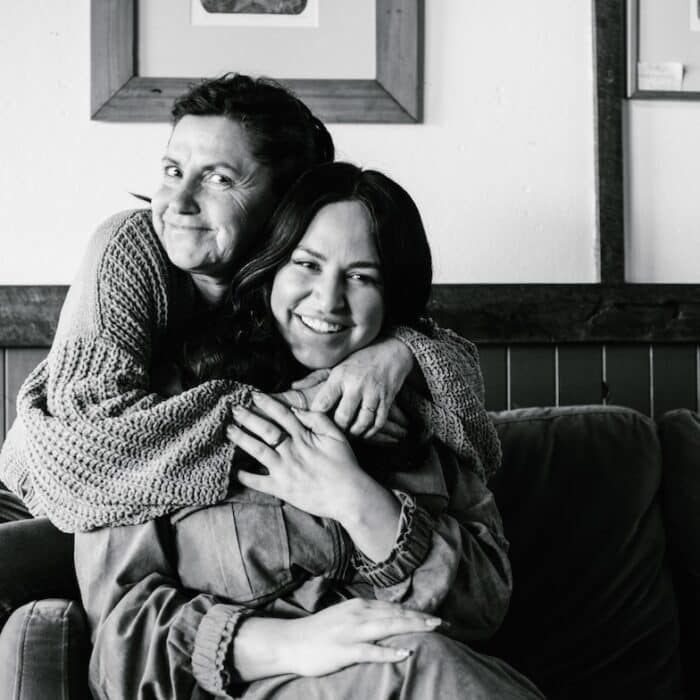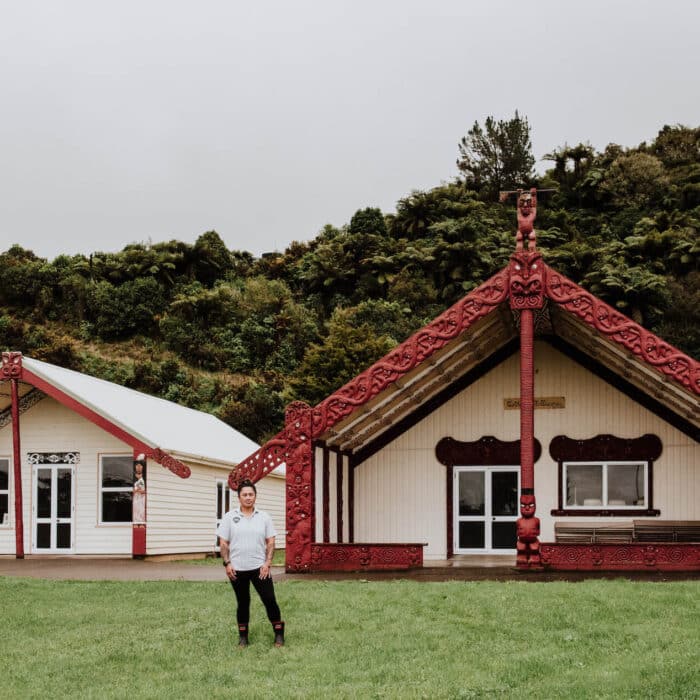25 August 2023
Time to Create
Ringatoi Ahuwhenua. Rural Creative.
writer: Carly Thomas
photographer: Francine Boer
From a full-time career in the arts, Thelma Emslie has stepped back into a quieter life on the banks of the Ōwaka River in the Catlins. Here, she has the time, inspiration and good company of her husband to relish the creative hobbies that bring her joy.

Thelma’s light-filled studio. She and her husband are both artists – he’s a notable watercolour painter of high country scenes. “The high country people up there are pretty special, and I have always been fascinated by it all. For me there’s nothing better,” says Norman.
Thelma is at a time in her life now where she is doing the things she loves, just because she can. She lives right on the bank of the Ōwaka River at Surat Bay and, like the tides, everything happens at its own pace. Sitting on the stool of her pottery wheel, tucked in her studio just a stone’s throw away from the house, Thelma’s command of this place is apparent. She is confident and at ease here amongst her clay and tools. A content smile settles on her face. “I love working in here. The feel of ceramics and the fact that you use your hands, there is something so tactile about it. It is rewarding to start with a lump of clay and then end up with something magnificent.”
Thelma, 76, moved to Owaka from Dunedin four years ago with her partner, Norman Sinclair, a renowned high country watercolour painter. Together, the two have built a creative haven that is a combined house, gallery and collection of studio spaces. “We wanted to get out of Dunedin so we could have a gallery and have a place where we can create all the time,” Thelma says, pausing as a wry grin makes her eyes flash. “We have just about made it the way we want it.”


Thelma’s life has been an artistic one since she was handed a pencil when she was two years old. Since then, she says, “I haven’t ever stopped. It is a part of me.” When Thelma first left school she took up a sewing apprenticeship, something she says, “really set me on a creative path.” It was a practical skill she later taught, along with art and gardening, through the Salvation Army Work Skills Programme. She later ran the Dunedin Craft Centre for fourteen years and has always enjoyed encouraging creativity in others. Retired now, Thelma still loves to share her skills, and when someone really wants to learn, she will put aside some time for them and do just that. “One woman wanted to learn the pottery wheel and asked how long it would take. I said, ‘A week, a very intensive week.’ You have to get the basics right first. If you can’t centre, you can’t pot. But once people learn to centre the clay, then they are away,” she says.
As she speaks, Thelma’s eyes wander to the studio window where, outside in the garden, things turn technicolour – a place for her to go wild with tones and texture. Dahlias burst forth with bright exuberance while the tall gladiolus are more elegantly subdued. Orange blooms against purple and pink. Gardening is a passion for Thelma and she says there is a direct correlation between being a gardener and an artist. “To be able to create a garden that is pleasing to the eye is very much an artistic process. It’s part of the beauty of things. Sometimes the beauty overwhelms me.”

Shells Thelma has collected on walks over the years. From where Thelma and Norman live by the bay, inspiration is carried on the breeze with the smell of the ocean, careering seabirds above and the odd visiting sea lion down on the waterline.
The riot of colour stands in sharp contrast to the bright white interior of Thelma’s pottery studio. Amongst the flowerbeds, you can just catch glimpses of sculptures made by Thelma, inviting you to pause and really look. A large piece made from wire mesh greets passers-by at the front of her house and has become a much-photographed talking point. “It is fascinating to work in three dimensions,” she says of the ethereal, haunting sculpture. “It’s of a couple from the 1840s who have just arrived and are looking out to sea. You can see through it and it’s there, but it’s not. I think that’s so interesting.”

Shutting the door to her studio, Thelma heads into the house, where the couple have situated their joint gallery. On the walls are Norman’s paintings, depicting the high country life he loves. “It’s just something he has that lets him capture more than what he sees,” Thelma explains, saying Norman loves colour, “and cannot understand why I don’t always use it.”
She points out an intricate monochrome drawing of flowers created with her most beloved drawing tool – a number eight black ink pen. She says that taking away colour in her art allows her a certain freedom. “It means I can concentrate on the shading and the depth. Without the colour, the lines really say something. I love the detail. It takes hours and hours, but I love it. I love painting and drawing flowers. I have always studied them.”
In the corner of the gallery, and a further divergence from Norman’s large and striking high country scenes, is a collection of tiny white ceramics displayed on framed black shelves. A miniature tea set, a dish, plate and a bowl – intricate and fascinating – make you step in close. “This work depicts what I have made over the years in miniature. It’s a homage to my work I suppose.”

Altogether, it’s an elemental life with the river and sea at her feet and the earth and clay in her hands. When they first met, Thelma says Norman told her he knew she was an artist, “because of my hands.” Palms turned up, Thelma inspects her strong hands. “I even garden without gloves because, like with the clay, I love to feel the dirt.” Thelma says it’s great to have Norman with her to talk things through. “Whenever we go anywhere, Norman always says, ‘Look at the sky. What colour is that, Thelma?’ We really appreciate any form of art and so we have some neat conversations.”
The colour and joy of Thelma’s garden becomes a living extension of her studio and gallery space. Surrounded by art and nature, Thelma is revelling in what is now her time. And when the tide goes out, who knows what inspiration it will leave behind? “I go for a walk, I collect shells and I store things away in my mind,” she says. “I’m always looking, always.”

If you enjoyed this story, please share with someone else.
This story appeared in the Takurua Winter 2023 Edition of Shepherdess.
Get your hands on a copy.
Related Stories
Growing Up Green
Raised by eco-conscious parents in Hira, Emma Fryer is disrupting the plant-restoration industry with her environmentally friendly plant guard – the EmGuard.
Mel & Brianna
Melanie Gielen and daughter-in-law Brianna Patino, helms popular Rawene eatery The Boatshed Cafe. There, they dish up fresh, delicious kai with a twist, sharing their boundless hospitality with locals and
The course providing farming couples with the tools to make their businesses resilient, adaptable – and profitable
Ann and Scott took part in AWDT’s 'Our Resilient Farming Business' course.



